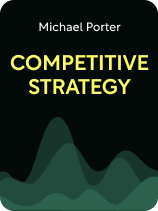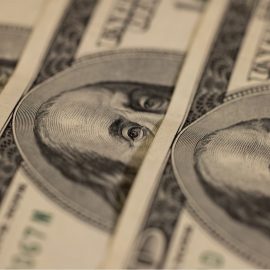

This article is an excerpt from the Shortform book guide to "Competitive Strategy" by Michael Porter. Shortform has the world's best summaries and analyses of books you should be reading.
Like this article? Sign up for a free trial here.
What are the factors affecting the market? How does understanding these factors give you a competitive advantage?
Five factors influence a market’s competitiveness and profit potential, according to Competitive Strategy by Michael Porter. Although the book was released in 1980, it’s still relevant today.
Here are the factors that you need to pay attention to when you enter the market.
Understand the Factors That Shape Your Market
According to Porter, before you can develop an effective competitive strategy for your business, you first need to understand five interdependent factors affecting the market’s competitiveness and profit potential:
- Supplier influence
- Buyer influence
- New competitors
- Alternative offers
- Rivalry competitiveness
Let’s explore in detail how each of these factors shapes a market.
Factor #1: Supplier Influence
The first factor that shapes a market is how much influence suppliers have. Porter explains that suppliers with substantial influence can dictate pricing, product quality, and availability, potentially limiting competition and profitability. For example, in the diamond industry, a few large diamond mining companies exert significant influence over jewelry manufacturers and vendors by dictating prices, setting quality standards, and restricting sales.
Factor #2: Buyer Influence
The second factor that shapes a market is how much influence buyers have. According to Porter, influential buyers can impact what businesses offer and their pricing strategies, as well as overall market demand for products and services. For example, in the smartphone market, buyers exert significant influence due to their ability to readily switch brands to meet their specific demands, whether it be for certain features or more affordable prices.
Factor #3: New Competitors
The third factor that shapes a market is the ease of entry for new competitors. Porter explains that markets pose varying degrees of challenges that influence new entrants’ ability to compete against established businesses. These challenges impact both the level of competition and the potential for market disruption. For example, in the e-commerce market, storefront technologies and global shipping infrastructures make it easier for new companies to enter the market. However, markets saturated by competitors pose challenges such as building brand recognition and establishing trust.
He states that new competitors find it easier to enter a market under a number of conditions, including:
- Low entry costs. Reduced capital requirements and financial barriers make it easier for new entrants to access the market without significant upfront investments.
- Absence of significant barriers. When there are no substantial legal, regulatory, or technological obstacles in place, new competitors can enter the market more easily.
- Favorable government policies. Government initiatives and policies that promote competition, reduce regulations, or offer incentives to new entrants facilitate easier market entry.
- Accessible distribution channels. Availability of open and accessible distribution channels, such as online platforms or partnerships with established distributors, simplifies the entry process for new competitors.
- Limited competitive advantage. If established businesses lack significant cost or quality advantages that are hard to replicate, it becomes easier for new entrants to compete on an equal footing.
Factor #4: Alternative Offers
The fourth factor that shapes a market is the potential for buyers to purchase alternative offers from other markets—the availability of other cheaper or better-quality offers that perform the same function as a product or service. For example, in the automobile market, the potential for alternative offers exists when customers find it more convenient or cost-effective to switch from owning a car to using substitute modes of transportation, such as public transport or ride-sharing services.
According to Porter, the likelihood of customers switching from an offer in one market to a substitute offer from another market increases competition, reduces market demand, and forces businesses to set lower prices.
(Shortform note: Rather than perceiving alternative offers from other markets as threats, businesses can take advantage of such offers by establishing strategic partnerships to expand their market reach. The 2016 collaboration between Toyota and Uber demonstrates this approach: By embracing the growing ride-sharing market, Toyota transformed its business model beyond conventional car sales, enabled Uber drivers to access high-quality vehicles at affordable rates, and empowered both companies to meet the evolving needs of modern transportation.)
Factor #5: Rivalry Competitiveness
The fifth factor that shapes a market is the extent of rivalry competitiveness. Porter explains that the degree of competition among existing rivals dictates the amount businesses must invest to acquire and retain customers. For example, in the fast-food industry, intense competition drives rivals to continuously invest in new product development, promotions, and expensive mass-marketing campaigns to outshine one another and capture market share.

———End of Preview———
Like what you just read? Read the rest of the world's best book summary and analysis of Michael Porter's "Competitive Strategy" at Shortform.
Here's what you'll find in our full Competitive Strategy summary:
- The groundbreaking book revolutionized the field of strategic management
- A guide for businesses seeking to achieve a competitive advantage
- How to anticipate and understand your competitors' strategies






